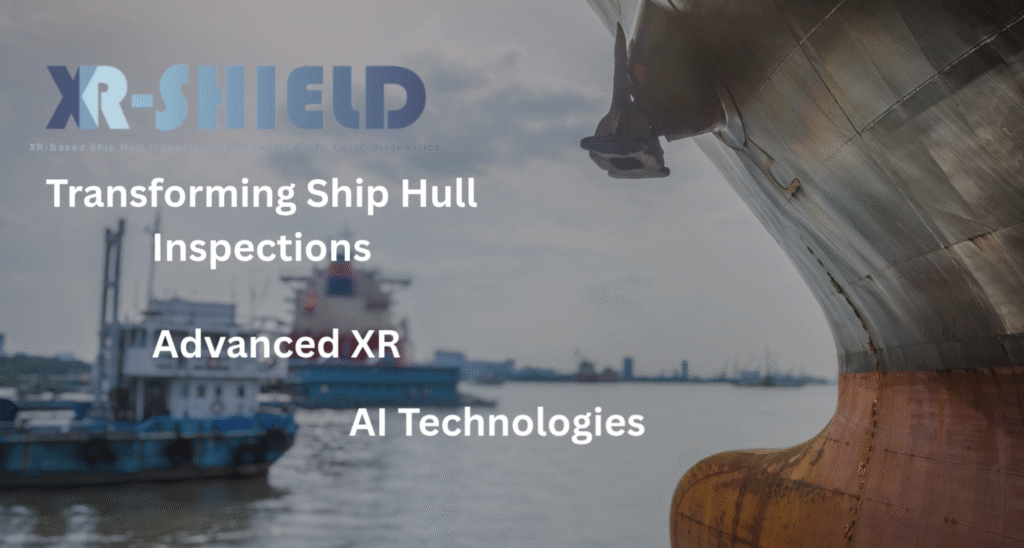Read the final interview with XR-SHIELD about their Open Call 2 pilot, where they tackled one of the most persistent challenges in industrial technology adoption: integrating Augmented Reality into traditionally conservative, manual work environments.
1. Now that we reached the end of your pilots, what was the single biggest challenge you faced, and what was the most rewarding aspect of the experience?
The biggest challenge was bringing augmented reality technology into a traditionally conservative and manual work environment. At first, we encountered resistance from some end-users, often due to fear of new technologies, lack of confidence in AR devices, or concerns about digital disruption. To address this, we invested heavily in training sessions, live demonstrations, and participatory involvement throughout the development phase. These activities not only showcased the practical benefits of XR-SHIELD—time and cost savings, improved safety, and reduced physical risks—but also gave users a voice in shaping the solution, which helped to build trust and acceptance. While some skepticism remained, the pilot demonstrated that once users engaged with the system, they quickly recognized its value. The most rewarding aspect was seeing how XR-SHIELD not only improved operational efficiency but also had a strong social impact by enhancing safety and security for inspection teams, reducing their exposure to hazardous environments. This combination of technology adoption and human-centric benefits was the most meaningful outcome of the project.
2. Looking back at the milestones we discussed, which were successfully met, and which fell short? For those not fully achieved, what were the primary obstacles encountered? Are you happy with the final results?
The key milestones have been achieved. More specifically: user training was completed, a live demonstration was successfully carried out, feedback was collected and focus group interviews were conducted, while the business model and commercialization strategy were finalized. Minor challenges encountered during the project included connectivity issues due to the remote location of the pilot test sites (shipyards) and difficulties integrating with SERMAS data, but these were mitigated by the installation of mobile hotspots, repeaters, and the use of technical support from the SERMAS community. Overall, we are very satisfied with the final results, especially since the pilot program not only validated the technical solution but also confirmed its strong social acceptance and commercial potential.
3. To what extent do you feel the pilot results aligned with your initial expectations?
The results of the pilot exceeded our initial expectations. We anticipated improvements in efficiency and safety, but the positive feedback from inspectors and remote experts regarding usability and collaboration was particularly encouraging. Social acceptance rates exceeding 90% showed us that XR-SHIELD is not only feasible, but also genuinely welcomed by end users, despite initial scepticism. Initial presentations of the solution to potential customers have generated high expectations, and we believe it is fully in line with our goals for creating a human-centred and socio-technical system, as envisioned by the SERMAS framework.
4. What are the immediate next steps and long-term ones for your pilots?
In the immediate term, our focus is on finalize the development of the solution based on the latest pilot feedback and beginning discussions with potential customers identified during SPRINT 3. Longer term, we aim to scale XR-SHIELD beyond maritime, into economy sectors like energy, aerospace, and infrastructure, where inspection processes are also complex and costly. Finally, we plan to strengthen partnerships with inspection companies, as they act as multipliers, delivering XR-SHIELD to a wide range of clients across industries.
5. Thinking about the whole process of implementation of your solution, what it the ‘best practice’ you would suggest to other people willing to use the SERMAS toolkit to implement their VR solutions?
The best practice, as identified by our teams is to involve end-users early and often, while keeping integration with the SERMAS toolkit iterative and supported by open communication with the SERMAS community. Leveraging the modularity of the toolkit—especially the dialogue, UI, and session management modules—allowed us to build a personal assistant that truly supports users in real time. We would advise future adopters to take advantage of the documentation and community channels, start with a clear use case, and then build step by step, validating functionality with real users to ensure both technical success and social acceptance.

